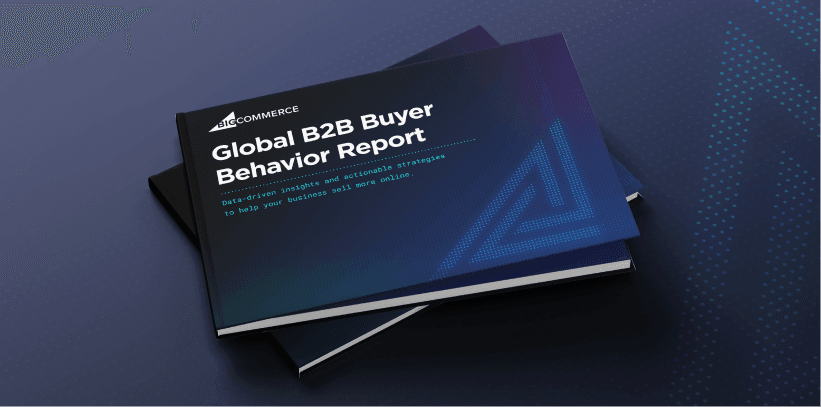by
No ecommerce store can thrive without advertising. After all, it has the power to help companies build brand awareness, drive traffic to their website, and generate sales.
Ecommerce advertising spending in the U.S. has grown steadily since 2019 — when it stood at $12.5 billion — and is expected to surpass $38 billion by the end of 2024.
Digital advertising takes numerous forms. Businesses can place product ads on search engines, social media, and other websites. Together with a robust digital marketing strategy — content marketing, email marketing, and other marketing tools — ecommerce advertising supports businesses looking to get discovered by potential customers and drive sales.
By showcasing desirable products, highlighting discounts, and creating a sense of urgency, online advertising can persuade those potential customers to purchase.
Effective strategies for ecommerce advertising
Businesses can advertise across a range of digital platforms, from search engines to social media networks, and more. Each platform accommodates different ad formats to target specific audiences.
Google Ads.
Google Ads gives advertisers access to a captive audience on the world’s most popular search engine. Advertisers can display ads on Google search results pages or websites within the Google Display Network (GDN).
Alternatively, Google shopping ads are sponsored product listings shown to users searching for specific items, while Local Services Ads help plumbers, carpenters, and other service professionals find clients in their local area.
Search ads operate on a pay-per-click (PPC) model, meaning advertisers pay when users click on their ads.
Paid social.
Social media ads complement an organic social media strategy by investing money to boost visibility and reach a broader audience.
Native advertising is a type of advertising that mimics the look and feel of other non-sponsored content. For example, Instagram ads made to look like organic content found elsewhere on the site.
Targeted ads on platforms such as Facebook or LinkedIn are displayed to users based on predetermined demographics, interests, and behaviours. Facebook lets advertisers target lookalike audiences to reach new audiences most similar to their existing customers.
Considering the average working-age internet user spends more than 2.5 hours per day using social media platforms, there is certainly room to experiment with social media advertising to help drive online sales.
SEO.
Search Engine Optimisation (SEO) can boost an ecommerce website’s visibility and ranking on search engine results pages (SERPs). By optimising on-page content, website structure, and backlinks using industry-aligned keywords, businesses can increase organic (non-paid) traffic.
On-page SEO focuses on optimising individual web pages by using relevant keywords, creating high-quality content, and improving meta descriptions, which help search engine crawlers better identify the content and index it in search results.
Off-page SEO entails building high-quality backlinks from reputable websites, collaborating with influencers, and guest posting on other blogs to attract traffic to the ecommerce site.
Organic social.
Organic social media content is compelling and shareable. The goal is to garner views and engagement from the quality of the content alone, without spending money on targeted advertising or boosting post visibility.
Text posts, images, videos, and links to blog posts enable businesses to showcase their expertise and brand identity while connecting with followers on a personal level.
Sharing other people’s content, responding to comments, and posting regularly are some keys to social media success.
Email and SMS Marketing.
Email marketing is highly effective because businesses can reach audiences directly in their inbox, making it a cost-effective way to nurture leads and maintain customer relationships.
With email marketing automation, businesses can send tailored messages based on user behaviour, preferences, and previous interactions.
SMS marketing involves sending concise promotional messages, such as time-sensitive offers, appointment reminders, or order notifications.
Referral marketing.
Otherwise known as word-of-mouth marketing, referral marketing is a strategy where businesses recruit existing customers to spread the word about them by posting on social media, writing reviews, or telling their friends about their positive experiences.
Online businesses can proffer incentives or rewards for new referrals, such as discounts, freebies, loyalty points, or exclusive offers.
A shareable referral code lets customers post about the brand on social media or their blog and receive attribution and a financial reward for every successful conversion.
Influencer marketing.
Brands often hire social media influencers to promote their products on platforms such as Instagram, YouTube, or TikTok to reach niche audiences. By finding an influencer whose audience mirrors the business’s ideal customer, the business can leverage the influencer’s credibility and following to reach a captive audience.
The influencer might post product demonstration videos, footage from an event, or photos of them using the product. Affiliate marketing is a lower-cost option that lets businesses work with affiliates who post about their products on the affiliate’s blog or social media in exchange for a commission on each sale.
Retargeting.
Retargeting is an ecommerce advertising strategy that involves displaying ads to previous website visitors. Tracking pixels enable advertisers to identify customers even after they leave the site.
By re-engaging potential customers who showed an interest in the brand, these ads remind customers about landing pages they viewed, items they left in their cart, or promotional offers they may have missed.
Retargeting ads encourage visitors to return to the website and complete a desired action, such as purchasing an item or signing up for a newsletter to receive a discount code.
Grow from $1 million to $100 million
Explore our collection of resources filled with actionable strategies, expert insights, and everything you need to increase ecommerce sales.
The future of ecommerce advertising
AI and other emerging technologies will provide more opportunities for ad personalisation, interactive experiences, and data-driven decision-making.
Predictive advertising.
Predictive advertising uses machine learning algorithms to analyse a customer’s browsing behaviour, purchase history, and demographic information to predict which products might interest them.
The algorithm then displays ads aligned with the individual’s user persona. The goal is to increase ad relevance and the likelihood of conversions.
Automated A/B testing is another emerging innovation that lets advertisers run two or more versions of an ad to identify the top performer.
Artificial intelligence.
AI is being used for seemingly everything from generating ad creatives to automating audience targeting, budget allocation, and ad placement. Advertising platforms like Facebook Ads offer automated bidding that uses AI to optimise ad spend based on campaign goals.
AI can also analyse historical ecommerce sales data and market trends to determine which products to advertise and create audience segments based on behaviour and shared interests.
Personalisation.
Personalisation is a pivotal aspect as ecommerce businesses look to overcome “ad blindness” — a problem where target audiences stop consciously registering ads shown to them because of excessive bombardment.
Dynamic content is a strategy where ad content is adjusted based on user preferences. For example, a customer who previously purchased winter clothing might see promotions for the spring collection, while a gadget enthusiast might see ads about electronics.
Tailored promotions and dynamic pricing are adjusted based on a customer’s willingness to pay. For example, a customer who typically buys items at a discount might receive different offers than someone who purchases at full price.
Augmented and virtual reality.
Augmented and virtual reality turn ecommerce ads into immersive experiences.
AR ads let potential customers visualise products in their own environment using virtual “try before you buy” technology.
With VR advertising, businesses can create virtual storefronts or exotic environments where users can explore products in more detail. For instance, real estate agencies use VR ads to let potential buyers tour properties virtually. VR can also be used in interactive storytelling to build an emotional connection with the audience.
The final word
Ecommerce advertising is a business-critical operation that requires companies to have a presence on multiple advertising platforms and marketing channels.
Businesses can post sponsored product listings, banner ads, video ads, and a multitude of other ad formats designed to achieve different advertising objectives, including acquiring new customers.
The best ecommerce brands use digital ads to complement the business’s organic ecommerce marketing strategy. It’s important for brands to set clear goals in all advertising campaigns to help reach their goals.



